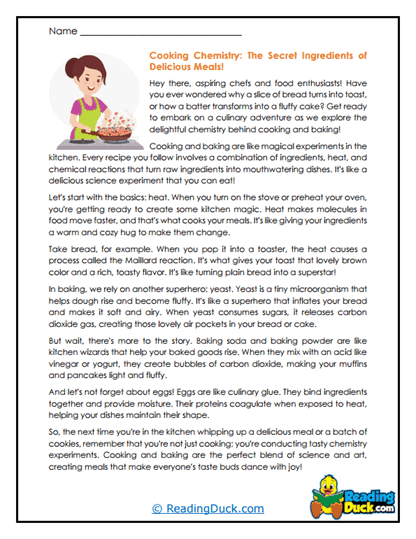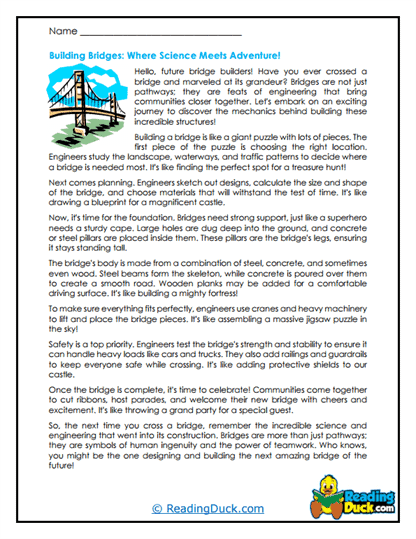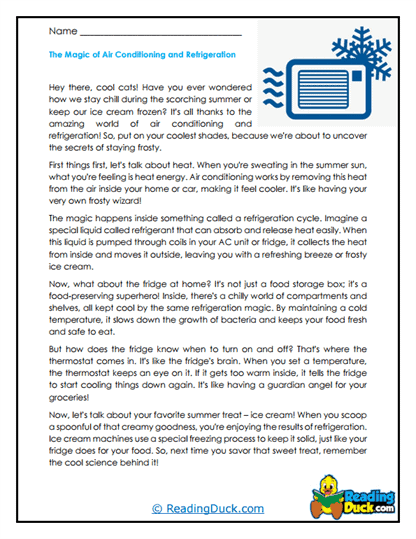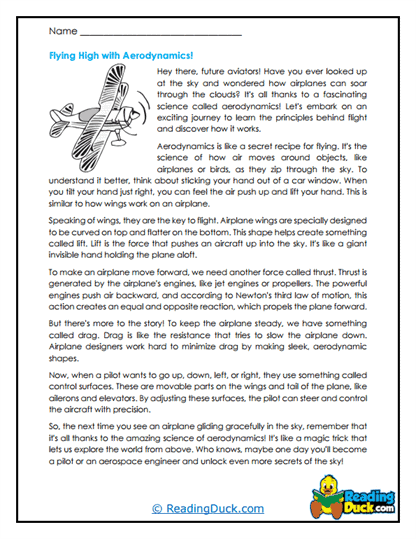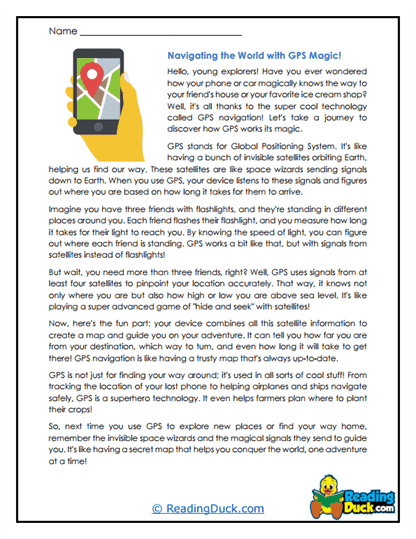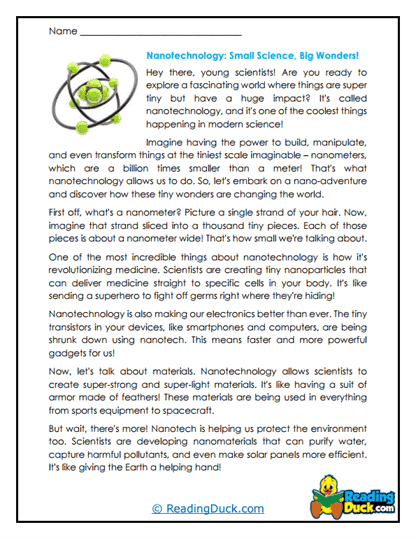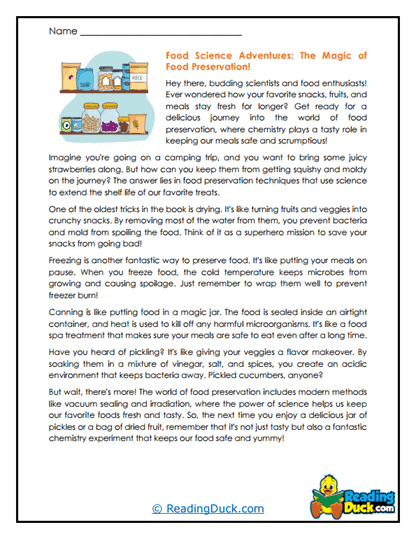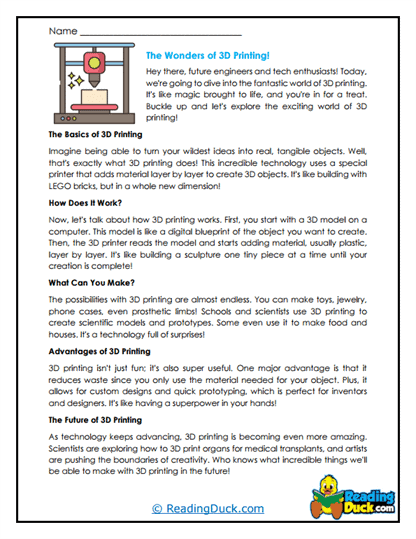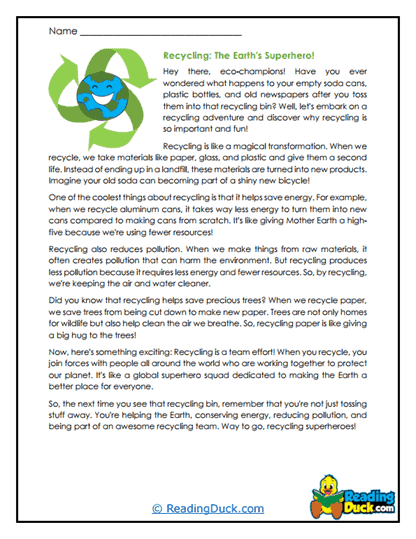Technical Reading Worksheets
About Our Technical Reading Worksheets
Our Technical Reading Worksheets are designed to help students master the critical skills needed to comprehend and analyze technical texts. Each worksheet set features a carefully curated technical reading passage aligned with real-world topics, such as technology, engineering, mechanics, and computer science. These passages are accompanied by multiple-choice questions, short answer prompts, and open-ended response questions that challenge students to think critically and engage deeply with the material.
All worksheets are provided in PDF format, making them easy to download, print, and share with students for both in-class and independent learning. Additionally, each worksheet comes with a downloadable answer key, allowing educators to efficiently assess students' understanding and provide timely feedback. Whether you're teaching foundational technical reading skills or preparing students for careers in STEM fields, these worksheets provide an essential tool for developing proficiency in reading and interpreting technical texts.
Understanding the Technical Reading Genre
Technical reading is a genre focused on interpreting texts that convey precise, factual information, often related to fields like technology, engineering, computer science, and mathematics. Unlike narrative or literary reading, technical reading requires a high level of focus on accuracy, clarity, and logical progression, as the information being conveyed often includes complex instructions, explanations, or data.
Key themes in technical reading include:
- Procedural clarity: Understanding and following step-by-step instructions or processes.
- Terminology: Grasping specific industry or field-related vocabulary.
- Data interpretation: Reading charts, graphs, and other visual representations of information.
- Critical analysis: Evaluating the reliability and accuracy of technical information.
Technical reading is crucial in the nonfiction genre because it helps students navigate real-world issues related to various fields of study. It develops precision in understanding texts, which is essential for careers in STEM and other technical industries. By honing their technical reading skills, students are better equipped to engage with manuals, reports, scientific studies, and instructional documents—all of which play significant roles in our technology-driven world.
Our Technical Reading Worksheets offer students structured reading passages that help them break down complex technical information into manageable parts. Through these exercises, students learn to navigate detailed explanations and technical jargon, allowing them to build the skills needed to understand and utilize technical documents effectively.
Fostering Essential Technical Reading Skills
Our Technical Reading Worksheets are carefully designed to build key genre-specific skills that are essential for understanding technical documents. These worksheets challenge students to move beyond surface-level comprehension and engage with the text in ways that encourage analytical thinking, problem-solving, and application.
Here’s how the worksheets help students develop essential skills:
- Comprehension of technical texts: Students practice extracting precise information from technical passages, including understanding instructions, definitions, and explanations. Multiple-choice questions test their ability to identify key points and details.
- Data interpretation: Students may be asked to read charts, graphs, or schematics that accompany the text, improving their ability to interpret visual information accurately.
- Analytical thinking: The short answer questions prompt students to critically analyze the technical information presented, such as determining the most efficient method or evaluating the validity of a given solution.
- Application and problem-solving: Open-ended response questions encourage students to apply the knowledge they’ve gained from the text to real-world scenarios, fostering practical problem-solving skills.
For example, a worksheet on a passage about renewable energy technologies might include questions asking students to compare the efficiency of different energy sources or to explain how a particular technology reduces environmental impact. These exercises push students to apply technical knowledge to current global challenges, making the learning experience both relevant and practical.
Supporting English Language Learners (ELL) with Technical Reading
Our Technical Reading Worksheets are an excellent resource for supporting English Language Learners (ELL) as they engage with complex, specialized texts. Technical reading often involves industry-specific language and detailed instructions, which can be challenging for ELL students. However, the structured and clear nature of these texts, combined with targeted questions, helps ELL students develop both their language proficiency and technical understanding.
Here’s how the worksheets benefit ELL students:
- Vocabulary acquisition: Technical texts introduce ELL students to field-specific terms, such as “algorithm,” “circuit,” or “calibration.” The worksheets provide context for these terms, allowing students to build their academic and technical vocabulary.
- Step-by-step comprehension: The clear, often linear nature of technical texts helps ELL students practice understanding sequences and procedures. Multiple-choice and short-answer questions guide them in identifying important steps or concepts.
- Language and concept mastery: Open-ended questions provide ELL students with opportunities to articulate their understanding of technical processes in their own words, helping them develop both language fluency and subject comprehension.
Additionally, the downloadable answer keys allow educators to provide immediate feedback, helping ELL students focus on improving their comprehension and technical language skills.
Building Cross-Disciplinary Connections Through Technical Reading
One of the major benefits of technical reading is its ability to connect with a wide range of academic subjects, including science, mathematics, and social studies. Our Technical Reading Worksheets not only teach students how to navigate technical texts but also encourage them to apply these skills across various disciplines, helping to create a holistic learning experience.
Here are some ways technical reading ties into other academic fields:
- Science: Technical reading is essential for understanding scientific papers, lab reports, and experimental procedures. A worksheet on a passage about climate change data might include questions that ask students to interpret graphs or data sets related to environmental science.
- Mathematics: Many technical texts require students to understand and apply mathematical concepts, such as calculating measurements, solving equations, or analyzing statistical data. For instance, a worksheet might focus on interpreting a set of instructions for performing a mathematical operation.
- Social studies: Technical reading can also be applied to understanding governmental reports, policy papers, or technological innovations that impact society. A worksheet on the development of infrastructure projects might challenge students to consider the engineering and societal implications of the material.
By making these cross-disciplinary connections, students learn that technical reading skills are not limited to one subject but are instead applicable to a wide range of fields, further enhancing their academic and career readiness.
Integrating Technical Reading into Literacy Programs
The precision and clarity required for technical reading make it a valuable component of broader literacy programs. Our Technical Reading Worksheets support the development of critical reading and writing skills, ensuring that students become proficient in analyzing nonfiction texts, constructing well-reasoned responses, and applying technical knowledge to real-world situations.
Here’s how the worksheets enhance literacy:
- Close reading skills: Technical texts demand careful attention to detail. The multiple-choice questions in the worksheets encourage students to read closely, ensuring they understand each component of the passage.
- Evidence-based writing: The short-answer and open-ended questions help students practice writing evidence-based responses, requiring them to cite specific information from the text to support their answers.
- Structured problem-solving: Technical reading often involves solving problems or making decisions based on the information presented. The worksheets encourage students to apply logic and reasoning, key components of strong literacy skills, to real-life scenarios.
Incorporating these worksheets into literacy programs not only improves students’ ability to understand and use technical documents but also strengthens their overall academic literacy, preparing them for success in both school and future careers.
Encouraging Critical Reflection and Real-World Application
One of the key advantages of technical reading is its direct connection to real-world applications. Our Technical Reading Worksheets encourage students to think critically about how the technical concepts they learn can be applied in various real-life scenarios, helping them develop reflective and analytical skills.
Here’s how the worksheets foster reflection and application:
- Real-world relevance: Open-ended questions prompt students to reflect on how the technical processes or concepts in the reading passage might apply to their daily lives or future careers. For example, a passage about robotics might ask students to consider the ethical implications of artificial intelligence.
- Personal connection: Many technical reading passages highlight innovations or technologies that are shaping the world today. The worksheets challenge students to think about how these advancements could impact their own lives, communities, or industries they’re interested in.
- Independent thinking: By engaging with the material through reflective and opinion-based questions, students develop the ability to analyze technical information critically, form their own interpretations, and evaluate the broader implications of the content.
For instance, after reading about alternative energy technologies, students might be asked to reflect on which technology they believe holds the most promise for reducing carbon emissions and why. This type of question encourages them to apply the technical information they’ve learned to global challenges, promoting both critical thinking and personal engagement.
Conclusion
Our Technical Reading Worksheets provide an essential tool for helping students develop the skills needed to comprehend, analyze, and apply technical information. With a combination of reading comprehension, critical thinking, and problem-solving exercises, these worksheets are designed to engage students with real-world technical texts while building their capacity for precision and analytical reasoning.
Adaptable for English Language Learners and applicable across various academic disciplines, these worksheets offer a versatile and powerful resource for fostering both technical literacy and cross-disciplinary skills. Whether integrated into literacy programs or used in STEM-focused curricula, the worksheets provide students with the tools they need to succeed in understanding and applying technical concepts.
By encouraging reflection, personal connection, and real-world application, the Technical Reading Worksheets make technical reading both relevant and engaging, preparing students for the challenges of today’s technology-driven world and helping them develop skills that are crucial for future success in a wide range of fields.
